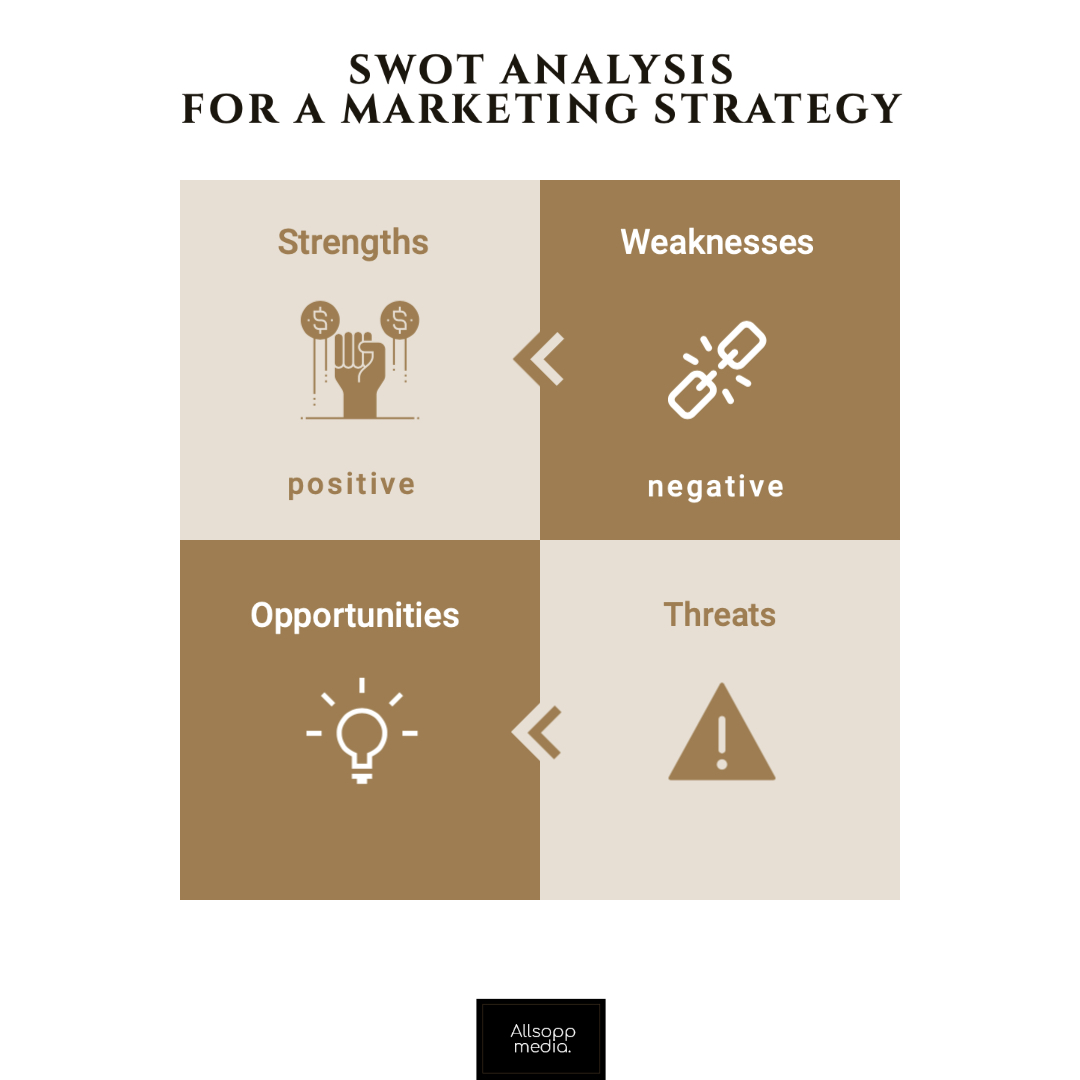Perhaps, every small or medium-sized business owner used digital marketing for promoting their brand online at some point. But most of the time, when you lack time and resources, digital marketing efforts are somewhat sporadic and lack systematisation. Most of us know that today digital marketing is more of a necessity rather than a luxury for any business, and having a system and structure to it can make it so much easier to manage all your marketing activities. If you don’t know where to start, we are going to cover it in this article and explain how to create a digital marketing strategy from scratch and make it cohesive and in line with your brand voice and identity.
What is a digital marketing strategy and planning?
Marketing planning is a process of systemising and creating a structure for all your digital marketing efforts. The ultimate goal of this process is to have a digital marketing strategy in place that is aligned with your business goals and aims to achieve them in a defined period.
There are three main elements in this definition:
- Goals
- System and structure
- Target audience
- Digital Sales funnel
- Timeframe
Before building any marketing strategy, including digital, you need to define your marketing goals. They usually need to be aligned with your business plan, target audience and a digital sales funnel stage. Then create a structured system and marketing calendar for implementing these goals. Finally, you need to establish for how long this plan is going to last.
Define your business goals and objectives
Before you decide on how to create a digital marketing strategy, it’s worth looking at your general business idea and goals. What do you want to achieve as a business? Are you a new brand, or do you already have some brand recognition? Does your brand need more leads and sales? Maybe you need to create or raise awareness and then start selling your services or goods?
Choose your target audience
Before moving anywhere else in defining your marketing strategy and forming an action plan, you need to know to whom you will be offering your services or selling goods. Many businesses make a mistake by trying to create a product or service for everyone. We are all very different, and so are our businesses, products and clients. One considers everyday cycling and regular jogging essential, and they will be innately interested in products and services related to physical health: sports accessories, healthy foods etc. At the same time, some of us prefer a relaxed epicurean way of life and have very little interest in new sneakers collections or a fitness club membership. They need a can of beer and the latest Assassin Creed release.
That’s why you need to draft a very detailed portrait of your ideal user – buyer persona – who will be interested in your services or goods.
A buyer persona is a clear profile of your perfect client. It’s a person who might have an urge to buy from you or shows some sort of liking to your brand. A buyer persona is a loyal and reliable client who will praise your brand to their friends and family.
Usually, it’s a real person image based on your current clients’ feedback. The more specific their characteristics are, the easier it will be for you to turn your website visitors into leads and leads into clients.
Example company: online shop selling cosmetics
Buyer persona: Millie Cooper, 23-year-old, has a university degree, not married and has no kids. She’s a marketing manager for a tech company, annual salary 25000 a year.
Buyer personas can be particular and sometimes have attributes that might seem unimportant. But these details can be intentionally chosen, especially if you are drawing a portrait of your buyer persona from a real person. They will let you see your potential customer much clearer.
Based on their traits and characteristics, you will be able to target some forums or groups and get valuable information about their views and preferences via polls and by asking specific questions.
Before you take on a task of creating an online marketing strategy, you need to consider your digital sales funnel. You can describe a digital sales funnel as a process of establishing relationships with your potential client through a combination of marketing tactics. Their ultimate goal is to generate leads for your business and turn prospects into loyal customers. The funnel consists of several stages that include:
Foundation. people first hear or learn about your brand
Consideration and research. It happens after your potential client has become familiar with your brand for the first time. At this stage, they do background research about your brand. They might also look at the offer your competitor has during this
Purchase. Clients finally decide to buy from your brand at this stage.
Loyalty and post-purchase experience. If your client is happy with the purchase, they might consider buying from you in the future or spread word of mouth about your brand and become your brand advocates.
You need to consider the fact that people at different stages for your digital marketing funnel won’t do the same thing and aren’t going to respond to your marketing efforts identically. The way they will get involved with your brand will depend on where in a digital funnel stage they are now. Your final marketing strategy will heavily depend on this and ultimately will be defined by it.
If you know at which stage of the funnel your target client is, it will be much simpler to define your marketing goal and objectives.
How to form marketing goals and objectives?
There are many ways of defining these goals, but the one we are using for most of our clients is using a SWOT analysis. During SWOT analysis, you scrutinise all external business environment factors in the form of threats or opportunities, and internal factors such as strengths and weaknesses, so that you can form your goals and objectives later.

The ultimate aim of SWOT analysis is to turn negative external and internal factors into positive ones, therefore increasing the value of your business for your customers.
Example: your company provides on-demand cleaning services to clients. Your main strengths are punctuality, quality of cleaning, and quick response to clients concerns on via your website chat, but your cleaners take longer time to thoroughly clean the house than the cleaners who work for your competitors. You have a website where people can make an online booking, but it can be a bit slow at times and not everyone in your company is trained to use it properly.
There are a lot of other competitors who provide a similar service. Some of them do the cleaning quicker and cheaper than your business, but their services lack quality. Some of their clients leave bad reviews because of this. You competitors have a better-looking website but don’t have an online booking system in place.
Strengths: punctuality of services, the excellent quality you provide your clients with, quick response and a website with online booking.
Weaknesses: slower cleaning time, sluggish online booking system and lack of staff training.
Threats: many competitors, some competitors do quicker cleaning, they have better-looking websites, your services are more expensive, you don’t have any online reviews yet.
Opportunities: You competitors don’t have an online booking system; they also have quality complaints from clients and bad reviews online because of this.
How do you turn your weaknesses into strengths and threats into opportunities?
You can say that the quality of your services is better because your cleaners are more thorough and take longer to clean, but the result is always great, and you never have complaints from your clients. While your competitors have better-looking websites, you have an online booking system, and they don’t.
After you finish SWOT analysis, it’s time to start looking at your marketing goals and objectives.
Goals are needed to define where your business will be going with their marketing activities. Setting goals also helps to concentrate on one global thing at a time: raising your brand recognition, increasing your email list, generating sales leads, getting more positive feedback from your existing clients. Your goal will define your digital marketing strategy objectives – the steps you will take to accomplish it.
In the example above, we had a cleaning company with high-quality services but no reviews online, while their competitors did, but they weren’t positive.
Your goal in this instance can be to create social proof with the help from your existing and new clients and encouraging them to leave reviews online.
What is social proof?
Social proof is a piece of evidence from people who interacted with your brand in the past and praised your services by leaving a review or shared information about your services to others because they liked it. People who read the testimonial or received a recommendation from their friend are much more likely to buy from you.
How you will work on creating social proof or implementing any other goal and objectives is the next stage of digital marketing planning and strategy – marketing tactics.
How to choose marketing tactics and channels for promotion?
Marketing tactics will heavily depend on the chosen goals and objectives and also on the digital funnel stage. When you know who your ideal client is, where they spend their time and if they are familiar with your brand at all or not, you will be able to see which channels and marketing tactics will be more beneficial for your brand. You will also need to consider if your business is using a B2B or a B2C model to define the most effective marketing channels and tactics.
Write a successful digital marketing strategy
If you follow the direction for creating your digital marketing strategy we outlined above and form a thorough plan for its implementation, you will be able to fulfil your business goals in no time and establish a strong reputation for your brand. A detailed marketing strategy can help you target people who are most likely to buy from you. Additionally, you will be able to use your marketing budget more effectively and stay focused if you follow the steps outlined in a marketing plan. It is especially relevant for startup businesses that have no extensive data at hand.
If you still need some assistance with how to create a digital marketing strategy and implement it, get in touch with us or see how Allsopp Media can help you.




